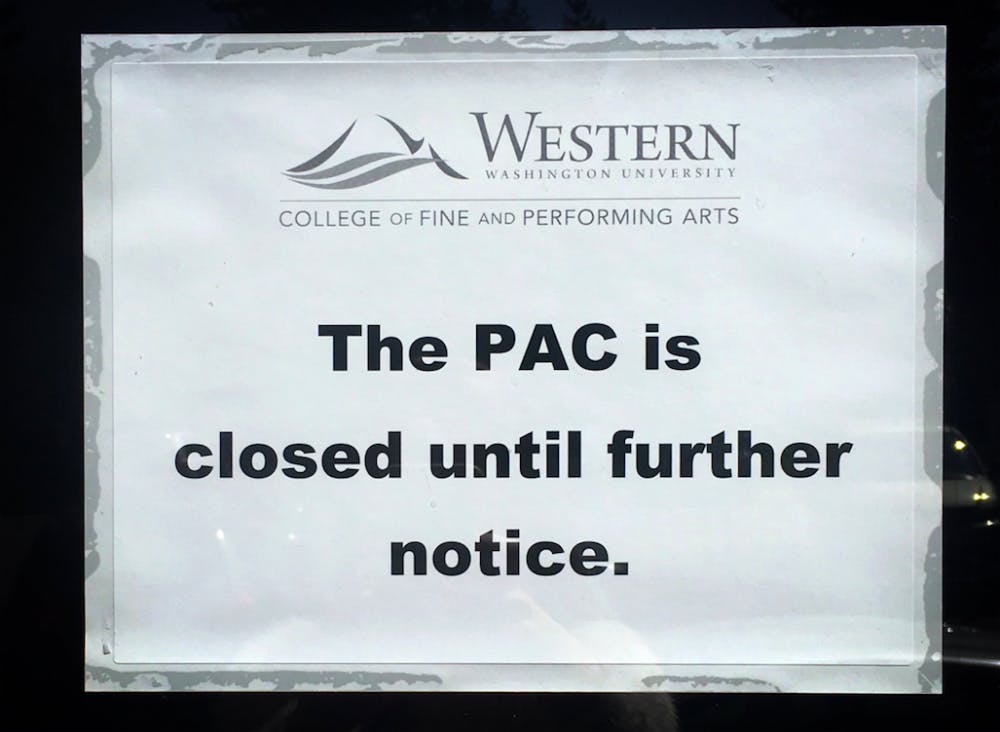
Students and professors work to make online classes comparable to previous lab and field-experience classes
On Monday, April 6, all-online classes began at Western after a one-week delay to the start of spring quarter.
Western moved to online classes on March 11 after Whatcom County announced its first COVID-19 case. The move to all-online classes was extended for all of summer quarter on April 10.
The switch to online classes meant that professors had to alter what hands-on classes — like lab classes and field-experience classes — would look like for spring quarter.
Esmeralda Farias, a fourth-year marine biology major at Western, has a lab class and a field experience class that have been impacted by the move to online classes.
Farias’ scientific boating class was a field course taught at the Shannon Point Marine Center.
“Our weekly lab was supposed to have field trips every other week to collect the data we would analyze,” Farias said. Instead, labs are using data collected in past years with videos made by her professor of the collection sites.
“We were supposed to spend the full day at the Marine Center, which was a big part of the appeal, but now we can't do that,” Farias said. “We were also supposed to get hands-on experience with the research equipment on the vessels, but that will also just be shared in video demos.”
Nicole Larson, director of the plastics and composites engineering major, said the lab components of these courses will be conveyed through videos of the professors doing the labs.
“Most of our professors are busy in the labs right now making video tutorials of the equipment and instruments,” Larson said.
The videos made by the professors detail the machines and processes used in the lab, but do not act as the sole substitute for students actually working in labs with the equipment. “We will be supplementing subsequent classes with this hands-on work so that the students can have adequate time on the equipment,” said Larson.
Professors and faculty are also having virtual office hours on Zoom.
Subsequent courses will be adjusted to ensure students get the necessary experiences with the materials, processes and instruments before they graduate, Larson said.
Some long-term student projects have been affected by the switch to online only courses, according to Larson.
“Most of the projects that are done in [plastics and composites engineering] are done with industry sponsors and our undergraduate students,” Larson said. “Unfortunately that has all been put on hold so the students aren’t able to work on an in-lab industry project this quarter.” Some of the work done by plastics and composite engineering students can be done on a computer with specialized software, so they can continue that work.
The College of Science and Engineering has surveyed all students to determine which students have computers and which do not. Students without a computer are loaned one by the university, Larson said.
“We have given each student that does not have a powerful computer a remote login to a specific computer in our lab that has the necessary software and power for them. We have also loaned out some departmental computers to those students that do not have any computer at home,” said Larson.
Students that do not have a computer powerful enough to run the specialized software have remote access to the university’s computer labs. Students that can run the software were given software licenses negotiated by the university, Larson said.
Tim Kowalczyk, an energy science professor at Western, teaches Energy Symposium, a carbon-reduction symposium class based around a one-day event held in the library where students spend the day learning from leaders in the energy industry. Kowalczyk said he is planning to run the symposium completely virtually this year so students still have the opportunity to meet industry leaders in their field.
Kowalczyk’s other class, Energy 421, the lab associated with Energy 420, is now using Python, a common programming language, to analyze wind-speed data from specific sites to determine the best places to build wind turbines.
“Instead of doing insulation experiments, they'll be using Python to analyze images I took with a thermal camera to learn about energy,” Kowalczyk said. “They'll learn how to dig into the pixel by pixel data from just an image.”
Kowalczyk will use the peer-reviewed “Journal of Visualized Experiments”, described on its website as, “9,500 videos demonstrating experiments from laboratories at top research institutions,” to replace running the biofuel experiments, which are typically conducted in a lab. Students will watch videos and read related literature.
“My Ph.D is in physical chemistry, but I focused on computational chemistry, so moving online has allowed me to align my lab work with my expertise,” Kowalczyk said.





